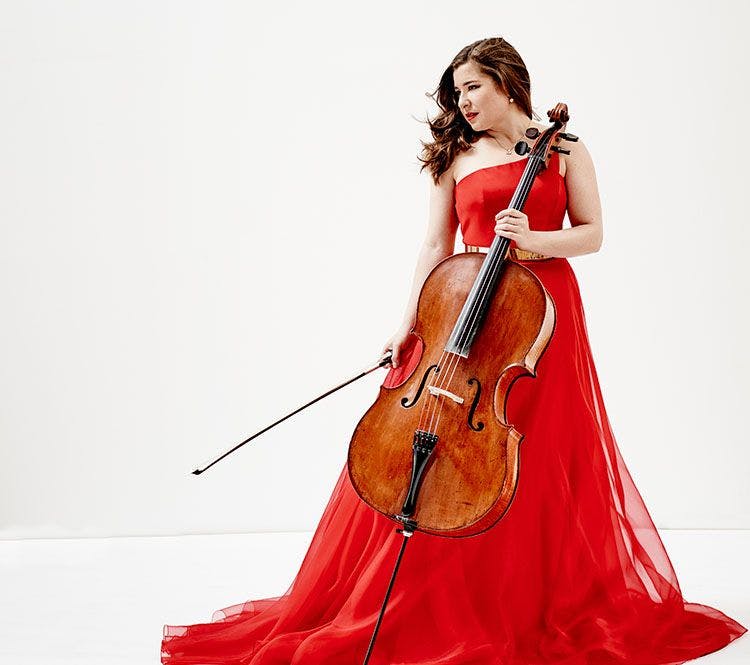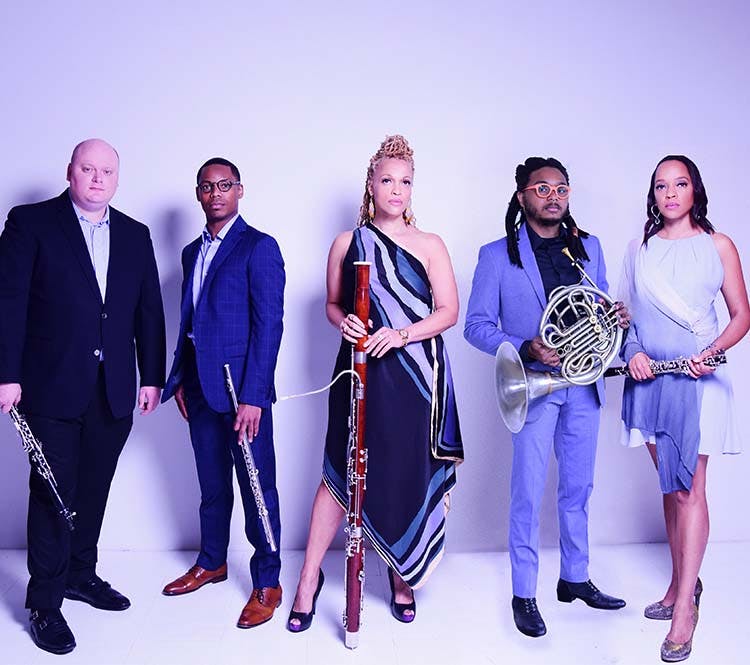“I have been living with these suites since further back than memory can reach, and I have grown with them throughout my life with the cello. Great music is a reflection of life as it is lived, and this … is a reflection of myself … steeped in and still discovering Bach’s unparalleled accomplishments.”
—Alisa Weilerstein, adapted from notes for her recording of Bach’s complete Cello Suites, which won the BBC’s Recording of the Year
Johann Sebastian Bach (1685-1750) wrote his six cello suites, BWV1007-1012, between 1717 and 1723, while he was employed at the court of Prince Leopold of Anhalt-Cőthen. It was one of the few times in his career when he had no responsibility for religious services. Bach was an excellent violinist, in addition to having superior keyboard and supreme compositional skills. Many modern scholars think that he may have written the suites primarily for himself to play on the viola da spalla, a small cello that was played “on the arm.” The base of the instrument was placed against the chest, with the fingerboard held along the left arm. This position allowed violinists to play the larger, lower-pitched cello with comparative ease. The instrument remained popular in Germany long after most other countries had adopted the upright cello. The suites show Bach exploring dance forms as well as instrumental and compositional techniques, challenging himself to create single-line music in these ancient forms that were normally fully harmonized.
Bach’s suites were composed at a time when solo music for the bass viol, a fretted instrument, had been played for over 50 years. However, Bach’s suites are the first written specifically for the cello, an unfretted instrument in the violin family. String players who wanted to play any type of cello had to learn new techniques. At the same time, many other technological changes were occurring, including the use of stronger-sounding strings, new techniques for making and using bows, and changes in the design and construction of the basic instrument. All surviving cellos from Bach’s day show that the fingerboards were altered to allow the “on the arm” instrument to be played upright, and bows went from an underhand position to placing the hand atop the bow. During this time of transition, Bach’s suites were unprecedented. They would stand alone as works for solo cello for roughly 100 years.
The suites follow the traditional form of the French overture, which was based on standardized dance movements. French culture had a huge impact on courts throughout Europe, and Anhalt-Cőthen was no exception. The basic movements, although no longer danced, were integral to a suite: allemande, courante, sarabande, and gigue. Bach was well acquainted with this style but expanded it by adding a prelude and including minuets, bourrées or gavottes in the various suites. Although he occasionally appeared to indicate a chordal structure, especially at cadences, the “chords” were actually double, triple or quadruple “stops,” in which two, three or four pitches are sounded almost simultaneously. In general, any harmony is by implication. Only a few bars have passages with two parts. Vibrato is treated as an ornament, and it, along with trills and other ornaments, were clearly marked in the manuscripts. The pitch was about one-half step lower than today’s concert pitch.
No manuscript of the suites in Bach’s hand has survived. His friend Johann Peter Kellner (1705-1772) made the first copy of Bach’s manuscript in 1726. Bach’s second wife, Anna Magdalena (1701-1760), made a copy between 1727 and 1731. Her copy is generally considered the most reliable, despite some evidence she made it hurriedly, especially in the placement of slurs. Two other anonymous but roughly contemporary copies exist. The earliest printed edition was published in 1826. Modern editions combine the best elements of all of these.
Suite Number 1, BWV 1007, is in G major. The Prelude features continuous 16th-note passages and arpeggios, sounding improvisational but actually very carefully planned. The Allemande has a faster tempo, with 16th notes related to the themes of the prelude. The Courante is even faster, with alternating 8th and 16th notes. The Sarabande implies counterpoint, although of course it is only one line, played more slowly than the preceding movements. The low notes sound as if they were played continuously, despite the intervening measures without those pitches. The non-French insertion is the pair of minuets, which feature a major/minor/major contrast. The Gigue is relaxed, humorous, and features surprising rhythmic and implied harmonic structures. This suite was the inspiration for the Toronto Music Garden, a three-acre garden which resulted from a collaboration between Yo-Yo Ma and the Toronto Botanical Gardens. Search “Toronto Music Garden” on a browser for more information about this unusual representation of the Suite.
Suite Number 3, BWV 1009, is in C major. The Prelude is in ¾ time with many scale passages and broken chords. It ends with a quadruple stop: four notes played as close to simultaneously as possible. The Allemande is slow, with many open strings, double stops, and wide leaps. The Courante begins in ¾, switches to 6/8, and is light and Italianate. The Sarabande has syncopated rhythms with multiple stops and a stately affect. The Bourrée is in two parts; the first features strong rhythms and is in C major, followed by a slower section in the parallel key of c minor, then a repeat of the first part. The Gigue is cheerful, with large leaps and some drone-like passages, with a unique and “picturesque” theme, to quote one reviewer.
Suite Number 5, BWV 1011, was intended for a five-string instrument that was re-tuned from the standard pitches. This tuning technique, scordatura, is rarely used for the suite today. Suite 5 is the most technically and musically advanced of all the suites and its prelude is the longest of all individual movements. The Prelude begins slowly, almost hesitantly, with multiple stops and dotted rhythms harking back to the French overture. The second theme features a series of rapid passages with imitation of earlier phrases. The Allemande continues the dotted rhythms but in a somber mood. The Courante is a major contrast, with an almost-frantic exhibition of technical skill, abandoning most of the dance-like characteristics of its namesake. The Sarabande is brief and sad, with large leaps and implied dissonance. The first Gavotte features angular motion and a nervous minor-key energy, while the second moves in triplets, with a memorable theme. The Gigue is less energetic than many of Bach’s gigues, with several held high notes that tumble in 3/8 time to the lower registers. Its second theme continues the descending line and quietly ends on a single low pitch.
—Mary Black Junttonen
MSU Music Librarian Emeritus

